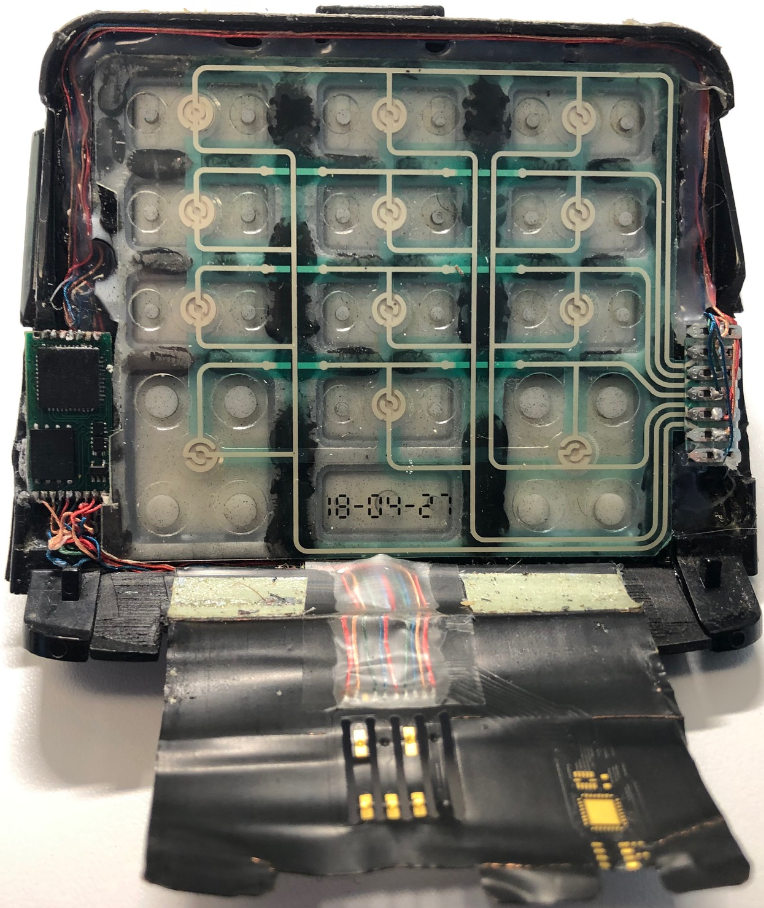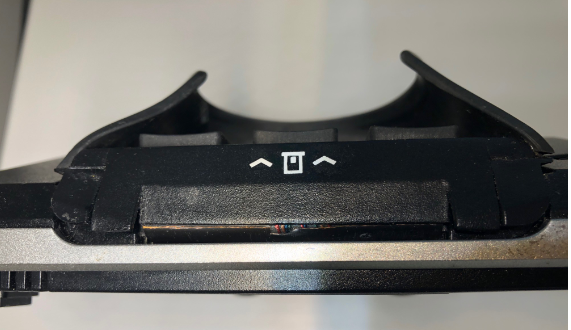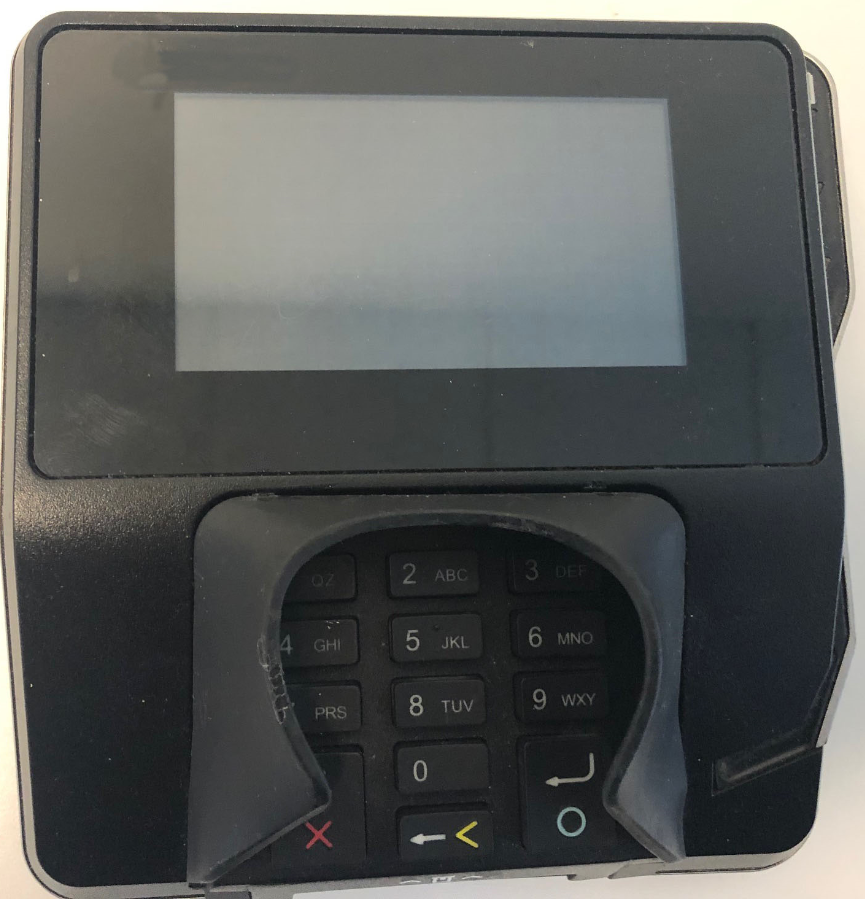Checkout Skimmers Powered by Chip Cards — Krebs on Security
Easily the most sophisticated skimming devices made for hacking terminals at retail self-checkout lanes are a new breed of PIN pad overlay combined with a flexible, paper-thin device that fits inside the terminal’s chip reader slot. What enables these skimmers to be so slim? They draw their power from the low-voltage current that gets triggered when a chip-based card is inserted. As a result, they do not require external batteries, and can remain in operation indefinitely.

A point-of-sale skimming device that consists of a PIN pad overlay (top) and a smart card skimmer (a.k.a. “shimmer”). The entire device folds onto itself, with the bottom end of the flexible card shimmer fed into the mouth of the chip card acceptance slot.
The overlay skimming device pictured above consists of two main components. The one on top is a regular PIN pad overlay designed to record keypresses when a customer enters their debit card PIN. The overlay includes a microcontroller and a small data storage unit (bottom left).
The second component, which is wired to the overlay skimmer, is a flexible card skimmer (often called a “shimmer”) that gets fed into the mouth of the chip card acceptance slot. You’ll notice neither device contains a battery, because there simply isn’t enough space to accommodate one.
Virtually all payment card terminals at self-checkout lanes now accept (if not also require) cards with a chip to be inserted into the machine. When a chip card is inserted, the terminal reads the data stored on the smart card by sending an electric current through the chip.
Incredibly, this skimming apparatus is able to siphon a small amount of that power (a few milliamps) to record any data transmitted by the payment terminal transaction and PIN pad presses. When the terminal is no longer in use, the skimming device remains dormant.
The skimmer pictured above does not stick out of the payment terminal at all when it’s been seated properly inside the machine. Here’s what the fake PIN pad overlay and card skimmer looks like when fully inserted into the card acceptance slot and viewed head-on:

The insert skimmer fully ensconced inside the compromised payment terminal. Image: KrebsOnSecurity.com
Would you detect an overlay skimmer like this? Here’s what it looks like when attached to a customer-facing payment terminal:

The PIN pad overlay and skimmer, fully seated on a payment terminal.
REALLY SMART CARDS
The fraud investigators I spoke with about this device (who did so on condition of anonymity) said initially they couldn’t figure out how the thieves who plant these devices go about retrieving the stolen data from the skimmer. Normally, overlay skimmers relay this data wirelessly using a built-in Bluetooth circuit board. But that also requires the device to have a substantial internal power supply, such as a somewhat bulky cell phone battery.
The investigators surmised that the crooks would retrieve the stolen data by periodically revisiting the compromised terminals with a specialized smart card that — when inserted — instructs the skimmer to dump all of the saved information onto the card. And indeed, this is exactly what investigators ultimately found was the case.
“Originally it was just speculation,” the source told KrebsOnSecurity. “But a [compromised] merchant found a couple of ‘white’ smartcards with no markings on them [that] were left at one of their stores. They informed us that they had a lab validate that this is how it worked.”
Some readers might reasonably be asking why it would be the case that the card acceptance slot on any chip-based payment terminal would be tall enough to accommodate both a chip card and a flexible skimming device such as this.
The answer, as with many aspects of security systems that decrease in effectiveness over time, has to do with allowances made for purposes of backward compatibility. Most modern chip-based cards are significantly thinner than…
Read More: Checkout Skimmers Powered by Chip Cards — Krebs on Security














